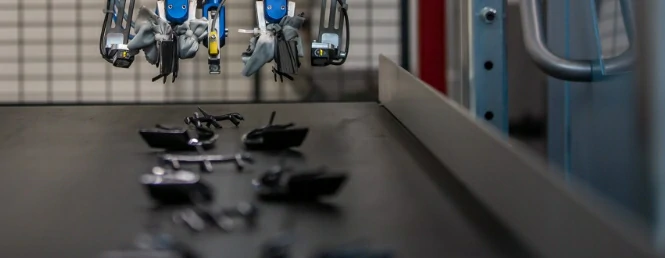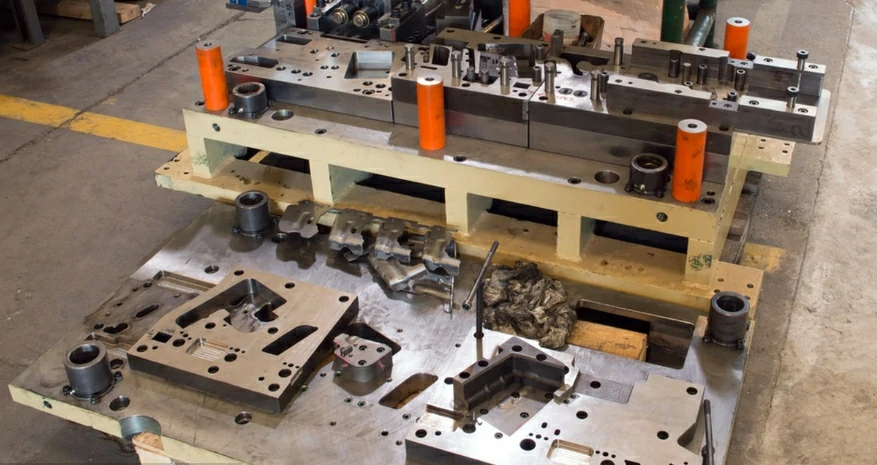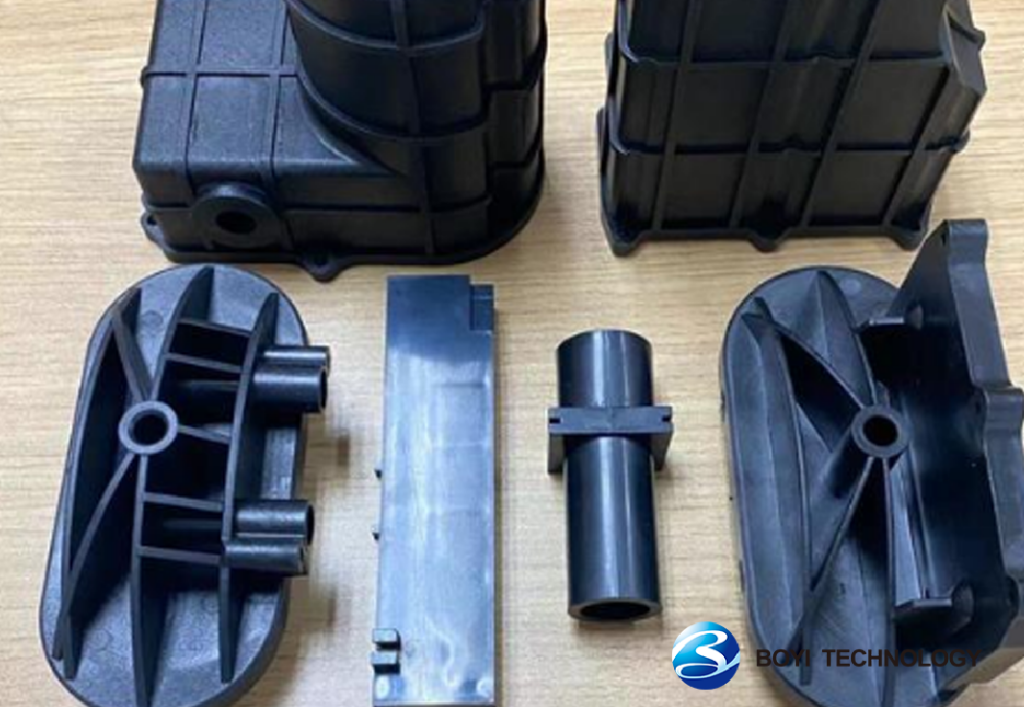With the rapid transformation of the manufacturing industry and the ever-accelerating pace of the market, there is a growing demand for products to be quickly brought to market while ensuring high quality. In this context, designers, engineers, and manufacturers face significant challenges: How to meet the demands of rapid production while ensuring quality? Low-volume injection molding technology provides an effective solution.
As the name suggests, low-volume injection molding is a production method tailored for small batch orders. Compared to traditional large-scale production, low-volume injection molding emphasizes flexibility and customization in production. It allows manufacturers to produce plastic products in relatively small quantities but with specific specifications or designs tailored to customer needs.
Please continue reading as this guide will provide all the information you need about low-volume injection molding technology.
Common Low-Volume Injection Molding Processes
Common low volume injection molding processes include the following:

Low-Volume Plastic Injection Molding
Plastic injection molding is a commonly used method for manufacturing plastic parts. Its basic principle involves feeding plastic pellets into the barrel of an injection machine, where they are gradually melted through heating and the rotational shearing action of a screw. Subsequently, driven by the screw, the molten plastic is rapidly injected into the cavity of the mold through a nozzle. Under the cooling effect of the mold, the plastic gradually solidifies and takes shape, ultimately resulting in the desired plastic product upon demolding.
Process Characteristics
The advantages of low-volume plastic injection molding lie in its ability to swiftly respond to market changes and adapt to diverse product demands. Moreover, there is a wide range of material choices available, enabling the production of diversified products. However, due to significant investments in molds and equipment, the cost of low-volume plastic injection molding is relatively high. Therefore, when engaging in low-volume production, it is necessary to comprehensively consider cost-effectiveness.
Application
Low-volume plastic injection molding is suitable for industries requiring rapid iteration and customization, such as electronic product components, precision instrument parts, etc. Additionally, during the prototyping phase or new product development process, low-volume plastic injection molding serves as a crucial means to validate product design and process feasibility.
Low-Volume Insert Molding
By embedding non-plastic materials such as metal into plastic products, integration assembly is achieved, enhancing the overall performance of the product.
Process Characteristics
Low-volume insert injection molding enables rapid customization and personalized production of products, meeting diverse market demands. Simultaneously, it reduces subsequent assembly processes, lowering production and labor costs. However, insert injection molding demands high precision in mold design and injection molding equipment. Thus, ensuring the stability and reliability of the process is crucial when engaging in low-volume production.
Application
Low-volume injection molding of embedded parts has a wide range of applications in fields such as automotive parts, electronic products, and household appliances. For example, switches, buttons, and other components inside cars often use embedded injection molding technology to achieve the combination of metal and plastic; Connectors, interfaces, etc. in electronic products.
Related: Automotive Fasteners: Key Components for Vehicles
Low-Volume Overmolding
Low-volume overmolding is a molding technique where one material is coated or encapsulated onto the surface of another material, typically utilized to enhance the appearance, texture, or performance of a product.
Process Characteristics
It possesses numerous advantages including a wide range of material options, fast molding speed, and stable product quality. By adjusting the type and thickness of the coating material, customized adjustments to product performance can be achieved. Additionally, overmolding technology can enhance product properties such as wear resistance and scratch resistance, consequently prolonging the product lifespan.
Application
It finds wide applications in various fields such as household items, electronic product casings, sporting equipment, etc. For instance, in household items, handles and grips often utilize overmolding technology to achieve a soft touch and anti-slip function. Similarly, electronic product casings frequently employ overmolding to enhance product texture and visual appeal.
Main Advantages of Low-Volume Injection Molding
Injection molding, as one of the primary processes in rapid manufacturing, has seen widespread applications in the manufacturing sector in recent years. Particularly for low-volume production, injection molding technology has demonstrated significant advantages. Below are the main advantages of low-volume injection molding:
Using Softer Aluminum Tools

One significant advantage of low-volume injection molding compared to traditional injection molding lies in the choice of mold materials. Traditional molding methods typically utilize hardened steel molds, which are not only costly but also have long processing cycles. However, small-batch injection molding uses aluminum to make molds, which are much softer than steel, making processing easier and faster.
This characteristic of aluminum significantly simplifies the mold manufacturing process, reducing processing difficulty and time. Additionally, aluminum tools have advantages in heat treatment, eliminating the need for complex annealing steps required for steel tools. Annealing is a common process in steel mold manufacturing aimed at reducing internal stress and improving metal toughness. Aluminum molds can avoid this cumbersome process, further shortening the manufacturing cycle.
Furthermore, aluminum molds support most surface treatment techniques used for steel. This means that after the mold is made, various surface treatments can be applied to aluminum molds as needed, such as polishing, painting, etc., to improve the appearance quality and durability of the mold.
Related: Surface Finishing Guide
Shortened Manufacturing Cycle
Low-volume injection molding technology excels in improving production efficiency, thereby significantly reducing delivery times. This advantage primarily stems from two factors: the use of aluminum molds and the efficiency of the BoYi production process.
The soft characteristics of aluminum simplify and expedite the mold manufacturing process. Compared to traditional hardened steel molds, aluminum molds do not require complex hardening treatments, reducing the time needed for mold production. Consequently, molds can reach manufacturing facilities more quickly, creating favorable conditions for the start of the production process.
As a professional injection molding service provider, BoYi combines efficient production processes with advanced technology, establishing a unique competitive advantage. Every step, from raw material procurement to final product packaging, undergoes rigorous control and coordination to ensure the continuity and stability of the production process. This efficient production process enables small-batch injection molding to fulfill a large number of orders in a short time, significantly reducing delivery times.
Put your parts into production today
All uploads are secure and confidential.
Reliable Part Quality
Even with the relatively soft aluminum mold material, this technology can still produce highly durable and functional parts, meeting the practical needs of numerous industries.
Compared to traditional steel molds, aluminum boasts higher thermal conductivity and electrical conductivity. This allows for rapid and uniform distribution of heat within the mold during low-volume injection molding, reducing problems related to heat accumulation and uneven cooling. Consequently, both dimensional accuracy and surface quality of the parts are significantly enhanced.
Due to the excellent conductivity of aluminum molds, the precise positioning of cooling lines becomes less critical. This means that engineers have more flexibility in arranging the cooling system during mold design, optimizing cooling efficiency. Moreover, this also provides more space for other components within the mold, further enhancing design flexibility.
Therefore, low-volume injection molding technology can bridge the gap between prototype production and high-volume production while ensuring part quality. Whether for rapid validation of design feasibility in prototype production or for high-quality, high-efficiency large-scale production, this technology can provide robust support.
Cost Reduction
Cost-saving is a key factor in enhancing competitiveness in the manufacturing industry. While it is commonly believed that purchasing products can save money, this notion is not entirely accurate in certain cases. Especially in the field of low-volume injection molding, significant cost savings can be achieved through flexible production scale adjustments and optimized material usage.
Traditional high-volume injection molding companies often set minimum order requirements to compensate for their fixed investments and cost coverage in mass production. However, this approach is not suitable for all manufacturers, especially those requiring low-volume production or needing to quickly respond to market changes.
In contrast, low-volume injection molding technology entails lower indirect costs. This means manufacturers can engage in production without minimum order requirements, thus reducing production thresholds and financial pressure. For manufacturers looking to engage in low-volume plastic manufacturing, this is undoubtedly a significant advantage.
Furthermore, low-volume injection molding technology helps mitigate the risk of obsolete inventory. With flexible production scales, manufacturers can adjust production plans promptly according to market demands, avoiding product backlogs and waste. This not only reduces inventory costs but also improves capital utilization efficiency.
High Design Flexibility
Low-volume injection molding technology also offers real-time feedback, aiding in improving the manufacturability of products. This enables businesses to transform feasible prototypes into actual production products without investing substantial resources. This approach reduces initial investment and risks for businesses while providing more time and opportunities to fine-tune products and processes.
Since low-volume injection molding primarily involves manufacturing smaller quantities of products in the short term, businesses can modify or change designs according to market feedback and actual needs, ensuring the perfection of the final product.
Application of Low-Volume Injection Molding
Low-volume injection molding is an efficient and flexible manufacturing technology that has wide applications in multiple fields. The following are the main uses of low-volume injection molding:
Prototyping
In the early stages of product development, designers and engineers need to quickly and accurately create product prototypes for visual display, functional testing, and structural verification.
Related: Rapid Prototyping Services
Product Development
Through this technology, enterprises can produce samples with practical functions for deeper performance testing, reliability testing, and market research.
Low-Volume Production
For products with low demand but high quality requirements, using low-volume injection molding can reduce costs and improve production efficiency.
Related: Low-Volume Manufacturing Services
Alternative Solutions for Low-Volume Injection Molding
Although low-volume lastic injection molding has a wide range of applications in product development, prototyping, and low-volume production, in some cases, companies may also need to consider alternative solutions. These alternative solutions can be flexibly selected based on specific needs and scenarios.
Alternative processes for low-volume injection molding, including:
- 3D printing
- CNC machining
- Laser cutting
- Die-casting
- Vacuum casting
For the prototype production stage, companies can consider using 3D printing technology as an alternative solution. In the product development stage, enterprises can consider using processes such as CNC machining or laser cutting.
Related: CNC Machining Guide
Related: 3D Printing Guide
Materials for Low-Volume Injection Molded Parts
The plastic materials commonly used in injection molding are very diverse. The following are some commonly used plastic materials in injection molding:
- Acrylic (PMMA)
- Acrylonitrile butadiene styrene (ABS)
- Nylon polyamide (PA)
- Polycarbonate (PC)
- Polyoxymethylene (POM)
- Polyphenylene sulfide (PPSF)
- Polyethyelene (PE)
- Polypropylene (PP)
- Polystyrene (PS)
- Thermoplastic polyurethane (TPU)
- Thermoplastic elastomer (TPE)
When selecting materials, the expected application and operating environment are crucial considerations. For example, for components that need to withstand high temperature environments, polycarbonate (PC) or PPSF plastic with high heat resistance can be chosen; For components that require chemical corrosion resistance, nylon polyamide (PA) plastic can be chosen; For components that require high strength and durability, ABS plastic may be a good choice.
Related: Materials Guide
Boyi Low-Volume Injection Molding Service – Your Efficient Partner
Boyi is your preferred partner for low-volume injection molding. With our extensive experience, profound expertise, and advanced facilities, we are committed to significantly reducing the time from production to market for your plastic parts. Our efficient operational processes ensure rapid turnaround services without compromising product quality.
By choosing Boyi, you will enjoy the following advantages:
- High-Quality Prototypes: We utilize advanced injection molding technology and precision equipment to ensure that each prototype meets your design requirements and quality standards.
- Short Lead Times: With efficient production processes and flexible capacity scheduling capabilities, we can fulfill orders in the shortest possible time to meet your urgent needs.
- Competitive Pricing: We prioritize cost control and provide competitive prices by optimizing production processes and procurement channels, ensuring that your investment is worthwhile.
If you have any injection molding needs, simply upload your design files, and our professional team will promptly evaluate and provide the best service solution for you.
Put your parts into production today
All uploads are secure and confidential.
FAQ
Low-volume injection molding is a production method tailored for small batches of plastic parts, typically fewer than 1000 pieces. This method utilizes smaller-sized injection molding machines, which are also often suitable for prototyping. Through low-volume injection molding, businesses can efficiently and quickly produce high-quality plastic parts, meeting the market demand for small-batch and diversified products.
Generally speaking, the larger the size of the injection mold, the higher the price. For example, molds with smaller diameters may have lower prices, possibly around $3000. However, if the mold design is complex, requires high-precision machining, or uses special materials, the mold price may be as high as $80000 or more.
Tagged: Injection Molding Guide



